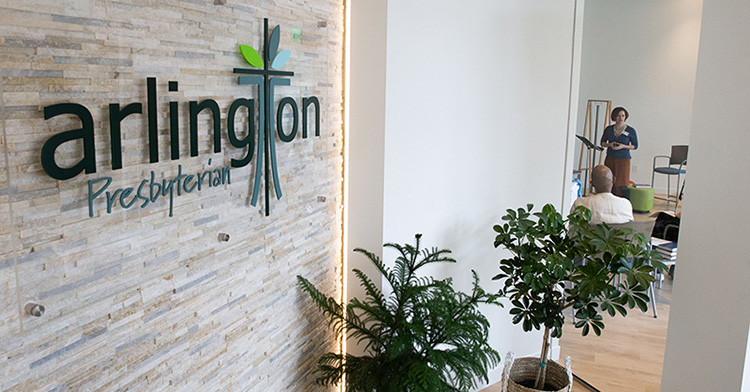In the ancient church, a young monk would approach an elder and ask, 'Abba may I have a word.' Tom Arthur, in his first year out of seminary, seeks advice from elders in these letters. The letter to which Brad Kalajainen replies is here.
Dear Tom Arthur,
I appreciate your questions about church buildings and new church starts. My experience parallels yours in significant ways. Coming out of seminary, I was appointed to a village (population 492) with a small red-bricked United Methodist church with an awkward white aluminum overhang on one side. An architect who came to live in the village affectionately called that overhang “the wart.” My second appointment was to a downtown congregation with a large stately, cathedral-like structure.
Having those two experiences in my past, I set out to plant a new church. Like your church, we first met in a high school. We too experienced the freedom of not being tied to a building or having to deal with maintenance issues. However, I always believed that a building of our own would be what our church needed. I cast vision for building as early as three months into the plant. I formed a building team and ran a capital campaign within the first six months. By the time the congregation was prepared to build in year six, we had saved over one-third of the cost of construction.
You might suspect that a church that focused on a building project might see the building as the goal. On the contrary, Cornerstone has now been through that first build, two subsequent additions, and just recently, a complete relocation into a new facility twice the size, done with relative ease. The reason is that Cornerstone has never lost sight of the mission. We have always viewed buildings (and now we can speak in the plural) as only instruments or tools of ministry. We have used that language for almost 20 years, including the time spent in the high school.
To answer your question of whether a new church in the Midwest can develop and grow without a building, my answer is, “Maybe.” That is not an evasive answer. God can do anything with any church. God can cause a “nomadic” church to blossom and a “quick to build” church to die, or vice-versa. The key variable is the heart of the leader and the people.
Having said that, a new church has a much higher chance of success with a building that is a genuinely useful instrument. In contrast to the old cliché, the walls do talk. Your building says so much about your mission. The wrong building can lead to loss of vision, a personality that is not in your DNA, and the discouragement of your people. Here are some suggestions to avoid this:
-Take time to design intentionally. A lot is communicated by space. Our new building communicates “community,” with a large Hub, or gathering area, filled with couches and a coffee bar. Our kids’ space communicates fun, safety, and excitement. Our youth area communicates that hanging out and worship are priorities.
-Teach people that sacred space is a priority throughout the Bible. God instructed his people to build regularly.
-Skilled use of technology communicates to a new generation of people who are technology savvy.
-A community can be blessed by the right space. Perhaps a church should do a community assessment first before building or remodeling to see how this building will benefit all the people who live there. Many churches get so focused on their own needs they forget why they exist.
From my experience, there appears to be a Midwestern kind of thinking that says, “You’re not legitimate without a building.” I don’t believe that is true, but to some degree, perception is reality. After our first build, we grew from 350 to 700 in a short amount of time. Since moving into our second building, in the first 10 weeks, our attendance is up 25-30%. Of course the church must deliver on program and mission to keep people, but the building plays a major role.
Capital campaigns help you get there. We are engaged in our 5th campaign in 19 years. Our people expect it.
Dynamic churches are always short of space.
Peace,
Brad Kalajainen







